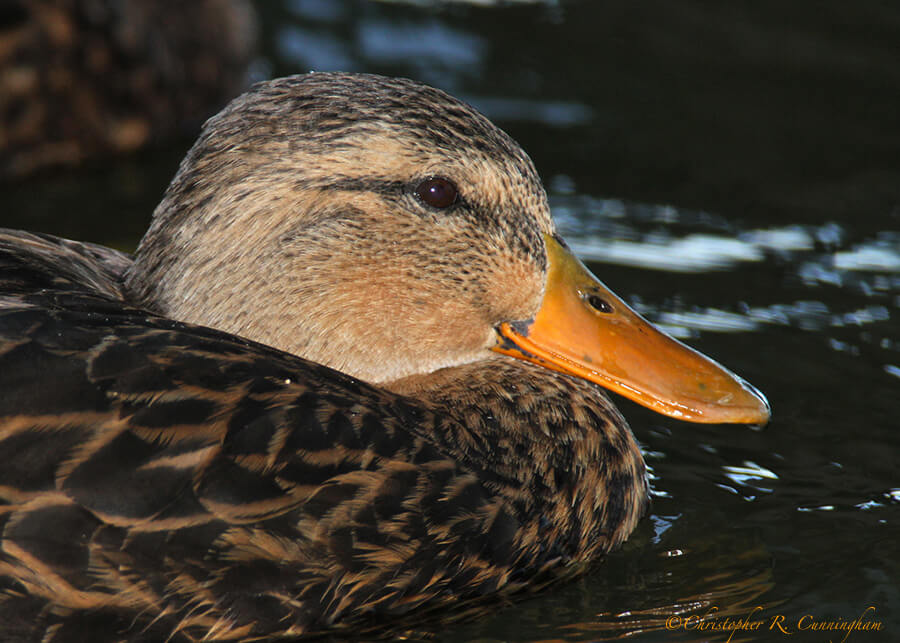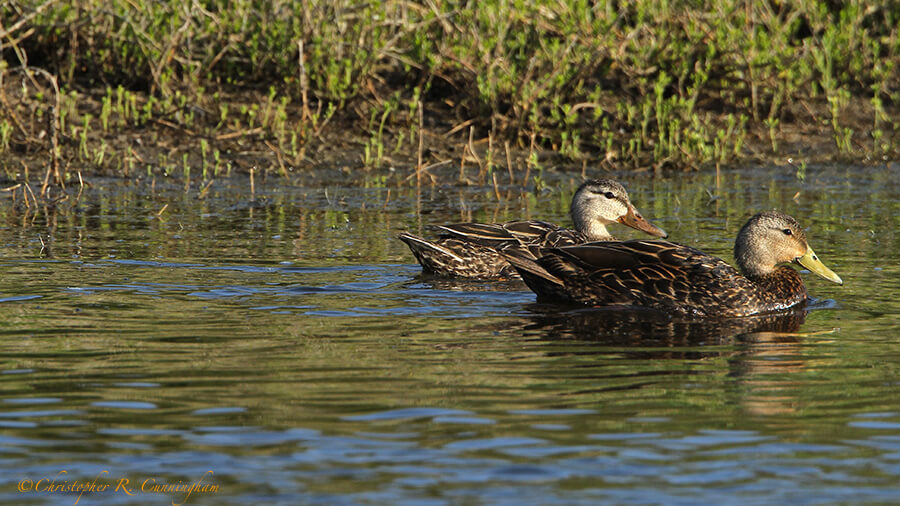

Over the Thanksgiving holiday we took a short road trip to Corpus Christi and environs, specifically with the hopes of seeing ducks, waders, and shorebirds. At Rockport, Texas I observed a small group of Mottled Ducks hanging around in the shadows under a dock. We see Mottled Ducks from time to time, but seeing these birds up close got me to reading more about them: they are unusual for a number of reasons. These dabblers are rather drab and show little sexual dimorphism relative to some other ducks. They are also non-migratory and reproduce in Southern marshes, rather than at higher latitudes like most other North American ducks.
Their status is of “least concern,” although their estimated numbers are only in the tens of thousands in Texas, a major part of their range. Mottled Ducks do have an unusually limited geographic range, essentially around the Gulf of Mexico, across Florida, and with an introduced population in South Carolina. There are actually two subspecies of Mottled Ducks: Anas fulvigula maculosa (Alabama to Veracruz, Mexico) and A. f. fulvigula (Florida). Numerous references suggest that Mottled Ducks, like many species, are under threat from habitat destruction such as the draining of marshes. Conventional wisdom has it that habitat destruction is more of a threat than human hunting—although seeing internet images of piles of shotgun-blast killed Mottled Ducks leads me to question that. Apparently some duck hunters collect bands, and Mottled Ducks are a heavily banded species (about 5%) thus making them a popular target.
Mottled Ducks are part of the “Mallard complex,” a group of approximately 20 closely-related species and subspecies of ducks. As a result, Mottled Ducks face another unusual challenge: gene flow from feral introduced Mallards. These “pen-raised” released and escapee Mallards generally do not migrate to northern breeding grounds. Naturally sexually aggressive male feral Mallards are interbreeding with local Mottled Ducks, thus undermining the genetic isolation of the latter and producing infertile hybrids. This problem is most significant in Florida, leading some to fear for the extinction of the Florida subspecies, although there are reports of hybrids from other areas, including Texas.
Only time will tell if the relentless crush of human ecological trouble-making will spare these lovely creatures.

I want to interpret the natural world and our links to it. It’s driven by the belief of many world-class scientists that we’re in the midst of an extinction crisis… This time it’s us that’s doing it.–Frans Lanting
©2013 Christopher R. Cunningham. All rights reserved. No text or images may be duplicated or distributed without permission.